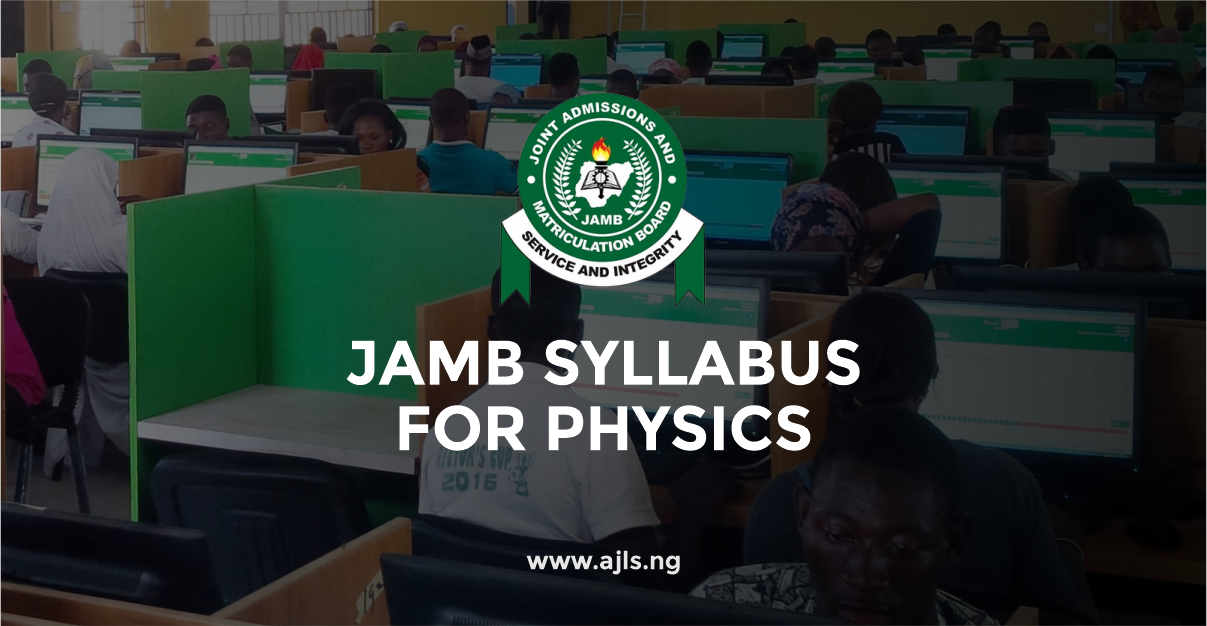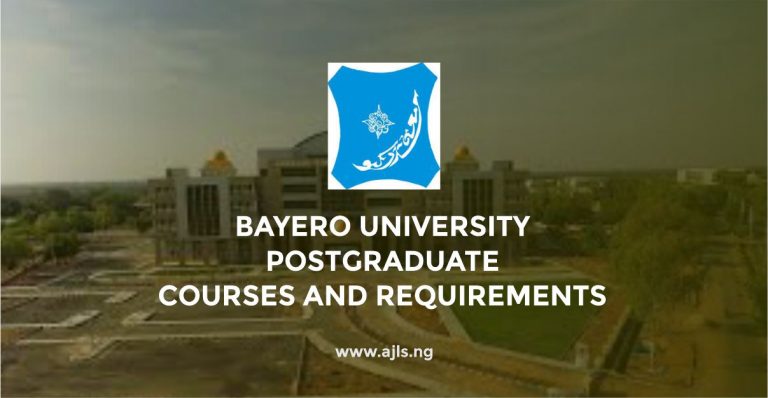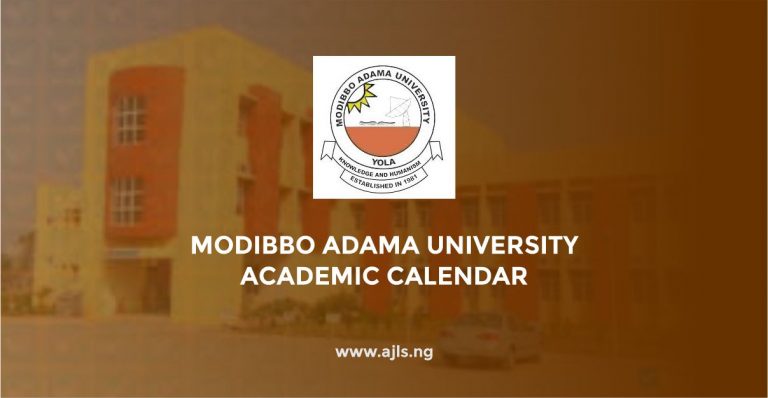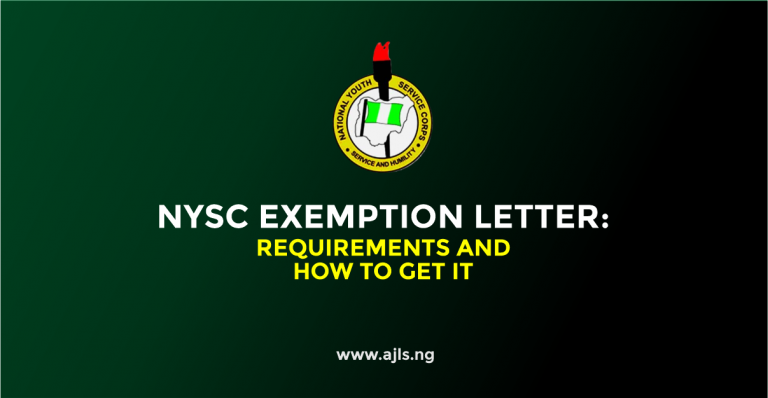JAMB Syllabus for Physics 2025

JAMB Syllabus for Physics – The Joint Admissions and Matriculation Board (JAMB) syllabus is a vital tool for students preparing for the UTME (Unified Tertiary Matriculation Examination). For those taking the Physics paper, it is essential to understand the content, topics, and structure outlined in the syllabus.
The JAMB Syllabus for Physics helps guide your preparation, ensuring you focus on the right areas and maximize your performance in the exam.
This article provides a comprehensive overview of the JAMB Physics Syllabus for 2024/2025, helping you stay on track for success.
Overview of the JAMB Syllabus for Physics
The JAMB Physics syllabus covers a broad range of topics, designed to test students’ understanding of fundamental physics concepts and their application in real-world scenarios.
It includes sections from classical mechanics, thermodynamics, optics, waves, electromagnetism, and more. The exam is aimed at evaluating both theoretical knowledge and problem-solving skills.
Key Sections in the JAMB Physics Syllabus
Measurements and Units
- Basic Quantities: Length, mass, time, temperature, electric current, luminous intensity, amount of substance.
- Units of Measurement: SI units, derived units, and their conversions.
- Significant Figures: Accuracy, precision, and the rules of significant figures.
Scalars and Vectors
- Scalars: Quantities that only have magnitude (e.g., mass, temperature, distance).
- Vectors: Quantities that have both magnitude and direction (e.g., velocity, force, displacement).
- Vector Operations: Addition and subtraction of vectors, components of vectors, and vector resolution.
Motion
- Kinematics: Displacement, velocity, acceleration, and their graphs.
- Equations of Motion: For uniformly accelerated motion.
- Projectile Motion: Horizontal and vertical components, range, maximum height.
Gravitational Field
- Universal Law of Gravitation: Newton’s law of gravitation, gravitational force.
- Gravitational Field Strength: Relation between gravitational force and mass, gravitational potential energy.
- Orbits and Satellite Motion: Kepler’s laws, circular motion of satellites.
Equilibrium of Forces
- Conditions for Equilibrium: Balanced forces, torque, and moments.
- Center of Mass: Concept of the center of mass in rigid bodies, equilibrium of a body under a system of forces.
Work, Energy, and Power
- Work: Work done by a force, calculations using force and displacement.
- Energy: Kinetic energy, potential energy, conservation of energy.
- Power: Definition of power, calculations involving work and time.
Friction
- Types of Friction: Static and kinetic friction.
- Laws of Friction: Factors affecting friction, applications of friction.
Simple Machines
- Mechanical Advantage: Levers, pulleys, inclined planes, and their efficiencies.
- Work and Energy in Simple Machines: Conservation of energy in machines, mechanical advantage and velocity ratio.
Elasticity: Hooke’s Law and Young’s Modulus
- Hooke’s Law: Stress and strain, elastic limit.
- Young’s Modulus: Relationship between stress and strain in materials.
Pressure
- Pressure in Fluids: Definition of pressure, atmospheric pressure, and hydraulic systems.
- Pressure in Solids: Stress and strain, factors affecting pressure.
Temperature and Its Measurement
- Temperature Scales: Celsius, Kelvin, and Fahrenheit scales.
- Thermometers: Types of thermometers and their uses.
Thermal Expansion
- Expansion of Solids, Liquids, and Gases: Linear expansion, area expansion, volume expansion.
Gas Laws
- Boyle’s Law: Pressure and volume relationship.
- Charles’s Law: Temperature and volume relationship.
- Ideal Gas Law: pV = nRT, applications of the ideal gas law.
Quantity of Heat
- Heat Transfer: Conduction, convection, and radiation.
- Latent Heat: Latent heat of fusion and vaporization.
- Specific Heat Capacity: Calculations involving heat energy, mass, and temperature changes.
Change of State
- Phase Transitions: Melting, boiling, condensation, freezing.
- Latent Heat: Heat required for phase changes.
Vapors
- Vapor Pressure: Boiling point, evaporation, and condensation.
Structure of Matter and Kinetic Theory
- States of Matter: Solids, liquids, and gases.
- Kinetic Theory of Gases: Molecular motion, pressure, and temperature relationships.
Heat Transfer
- Modes of Heat Transfer: Conduction, convection, and radiation.
- Applications: Thermal conductors and insulators.
Waves
- Wave Motion: Types of waves (transverse and longitudinal), wave speed, frequency, and wavelength.
- Wave Properties: Reflection, refraction, diffraction, and interference.
Propagation of Sound Waves
- Sound Characteristics: Speed, frequency, and wavelength.
- Acoustics: Sound waves in different media, the Doppler effect.
Characteristics of Sound Waves
- Pitch, Loudness, and Quality of Sound: Frequency, amplitude, harmonics.
- Propagation in Solids, Liquids, and Gases.
Light Energy
- Nature of Light: Dual nature of light, wave-particle duality.
- Speed of Light: Effects of different media on the speed of light.
Reflection of Light at Plane and Curved Surfaces
- Reflection Laws: Law of reflection, types of mirrors, and image formation.
- Concave and Convex Mirrors: Image properties.
Refraction of Light Through Plane and Curved Surfaces
- Snell’s Law: Refraction at plane and curved surfaces, critical angle, total internal reflection.
Optical Instruments
- Microscope, Telescope, and Camera: Principles of operation and image formation.
- Lens and Magnification: Convex and concave lenses, focal length, image formation.
Dispersion of Light and Colours
- Prism and Spectrum: Dispersion of light, rainbow formation, and color separation.
Electrostatics
- Electric Charge and Force: Coulomb’s law, electric field.
- Capacitance: Capacitors, are energy stored in a capacitor.
Electric Cells
- Types of Cells: Primary and secondary cells, electrochemical cells, and batteries.
Current Electricity
- Ohm’s Law: Resistance, resistivity, and applications in circuits.
- Electrical Circuits: Series and parallel circuits, Kirchhoff’s laws.
Electrical Energy and Power
- Energy in Electric Circuits: Power dissipation, calculations involving electrical energy.
Magnets and Magnetic Fields
- Magnetic Properties of Materials: Magnetic field lines, magnetic force on current-carrying conductors.
Force on a Current-Carrying Conductor in a Magnetic Field
- Lorentz Force: Force on a conductor in a magnetic field, Fleming’s left-hand rule.
Electromagnetic Induction
- Faraday’s Law: Induced EMF, Lenz’s Law, transformers.
Simple A.C. Circuits
- Alternating Current: Voltage, current, and impedance in an AC circuit.
Conduction of Electricity
- Electrical Conductivity: Semiconductors, conductors, and insulators.
Elementary Modern Physics
- Bohr’s Theory: Atomic model, energy levels, and quantum theory.
- Introductory Electronics: Diodes, transistors, and their applications.
Exam Structure and Weighting
In the JAMB UTME Physics Exam, the questions are usually divided into multiple-choice and theory sections. The syllabus is designed to help students focus on important topics that are most likely to appear in the exam. The weighting of each topic varies, with mechanics, electricity, and magnetism being heavily emphasized. It’s essential to allocate more time to the topics with higher marks and frequently tested concepts.
How to Use the JAMB Physics Syllabus for Effective Preparation
- Divide the topics into manageable sections and create a timetable. This ensures you cover all the essential areas without feeling overwhelmed.
- Don’t just memorize formulas; focus on understanding the concepts behind them. For example, grasp why certain laws (like Newton’s laws of motion) work the way they do.
- Physics is a subject that requires a lot of practice. Solve past JAMB questions to familiarize yourself with the type of problems you’ll encounter.
- Refer to textbooks that are aligned with the syllabus and provide comprehensive explanations of each topic.
- If you have difficulty understanding certain topics, seek help from teachers, tutors, or study groups.
- Regular revision is crucial to retaining key information and reinforcing your understanding of various topics.
Important Tips for Success in the JAMB Physics Exam
- Pay extra attention to the core areas like mechanics, electricity, and magnetism, as these are frequently tested.
- Practice solving questions under timed conditions to improve your speed and accuracy during the exam.
- Keep a formula sheet handy for quick reference. This will help you remember key equations during the exam.
- Take part in mock exams to simulate the actual exam environment and evaluate your progress.
- Don’t rush through the questions. Take your time to read each question carefully before answering.
Conclusion
The JAMB syllabus for Physics 2024/2025 is extensive, encompassing a wide variety of topics required for success in the UTM. With diligent preparation, concentrated study, and frequent practice, you may excel on the Physics test and move one step closer to admission to your selected university.
Make sure you use the curriculum properly, keep organized, and manage your time appropriately. We hope the information on this page is helpful. Best of luck with your preparations, and may you reach your goals!





